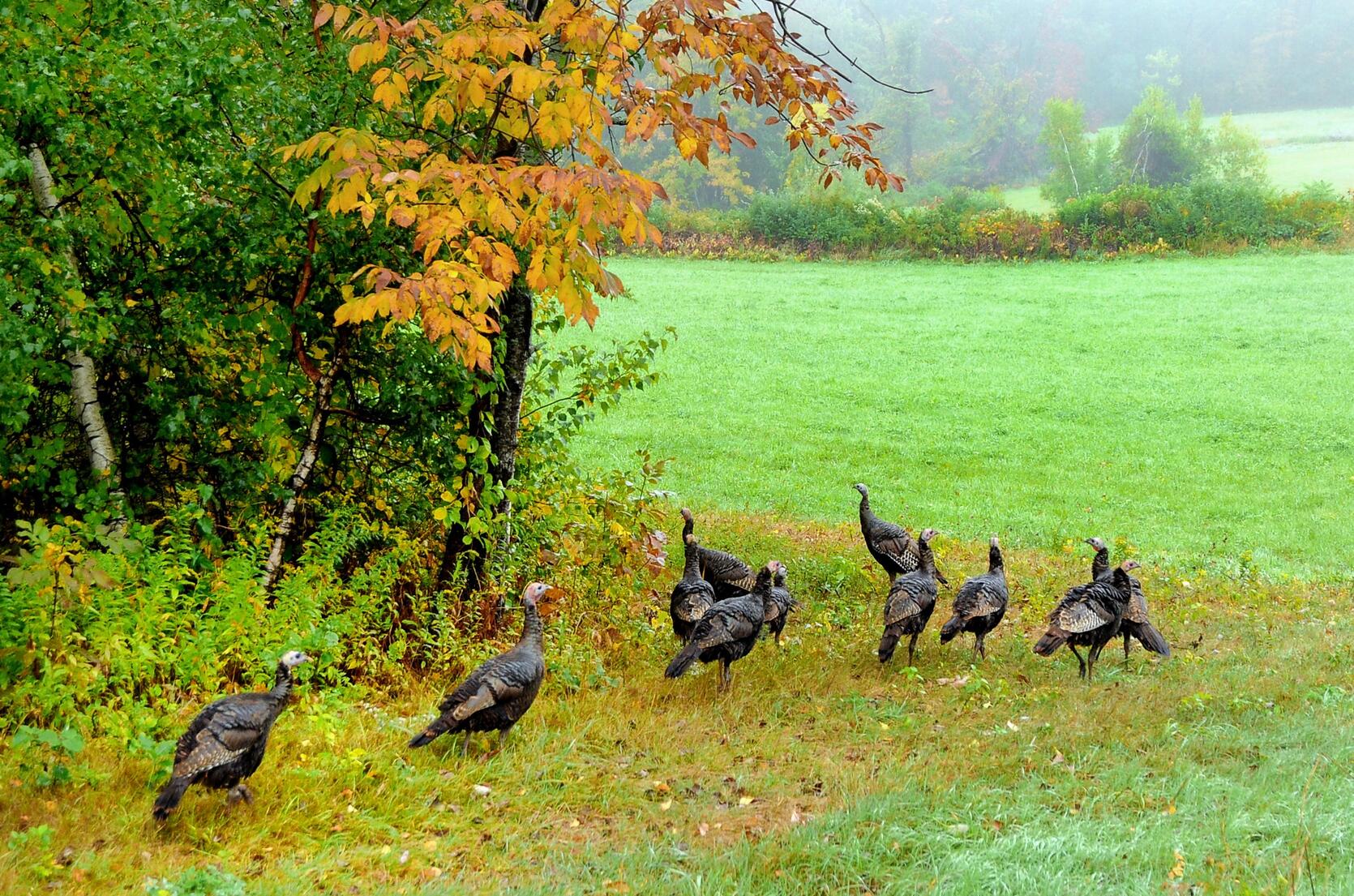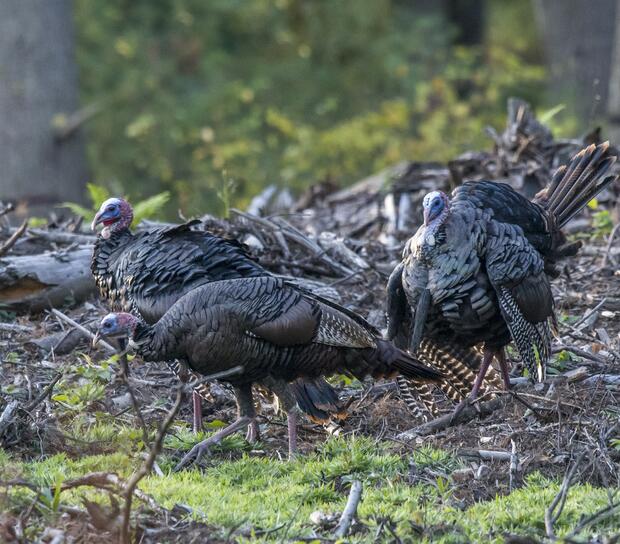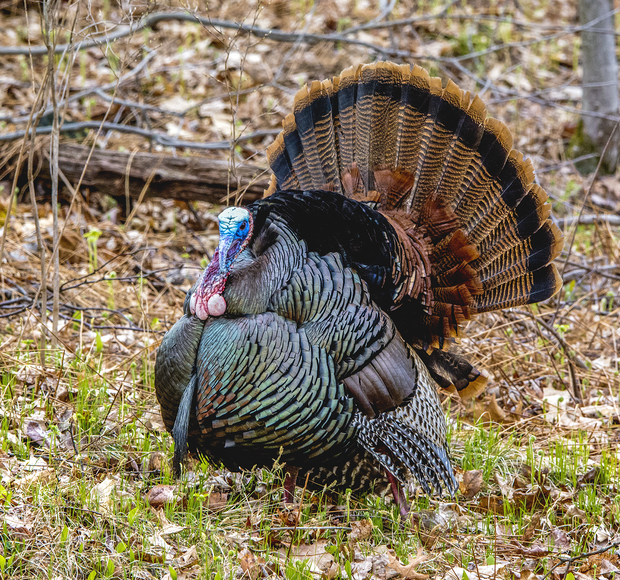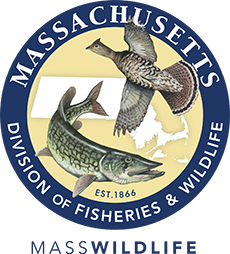- Division of Fisheries and Wildlife
Media Contact
Media Contact, MassWildlife

Massachusetts boasts a rich variety of habitats, each region with its own unique character. Yet despite these differences, wild turkeys can be found throughout the Commonwealth. Believe it or not, that wasn’t always the case—wild turkey habitat was once so scarce that turkeys disappeared from the Commonwealth in the mid-1800s. Thanks to successful restoration efforts led by MassWildlife and partners in the 1970s, wild turkeys have made a remarkable comeback and can now be found in every county except Nantucket.
Wild turkeys are habitat generalists meaning they make use of forests, fields, and even developed areas. However, they do best in landscapes where there is a variety of habitat types, allowing them to meet their needs throughout the year. So where do turkeys gobble, peck, and rest?
Foraging turkeys: Wild turkeys seasonally enjoy a diversity of food, including plant material, seeds, nuts, berries, insects, and invertebrates. In the fall, they often forage in mature forests with mast-producing trees such as oaks, hickory, or beech. If you are on the hunt for wild turkey, look for areas where turkeys have scratched through the leaves to find nuts and other food items on the ground.
Strutting turkeys: During mating season in the spring, male turkeys (toms) go to great lengths to attract females (hens). To show off their fitness, toms will gobble, puff their features, fan out their tails, and strut around while dragging their wings. This kind of performance requires an open stage, which could include fields, open woodlands, and forest clearings.
Raising turkeys: Turkeys are ground nesting birds and use a variety of different nesting habitats, including forest edges, shrubby areas, or sometimes in tall grasses in hayfields or pastures. Turkey poults (baby turkeys) can leave the nest within the first 24 hours of hatching and turkey hens rely on thick vegetation to protect their young from predators. During the summer, turkey poults favor protein-rich insects found in grasslands and other habitats, which enables the poults to grow and mature quickly.
Sleeping turkeys: Wild turkeys are active during the day and need a safe place to catch up on some z’s when the sun goes down. Turkeys fly in short bursts to roost in large trees. Roosting high off the ground keeps them safe from predators that are active at night, like coyotes and bobcats. Turkeys often select hardwood trees for roosting but may seek a more sheltered perch in hemlock trees during cold, windy nights.
Wild turkeys rely on a mix of forests, fields, and open areas to meet their needs throughout the year. The next time you see a wild turkey, take a moment to think about the variety of habitats that support its life and allow it to thrive across Massachusetts.


